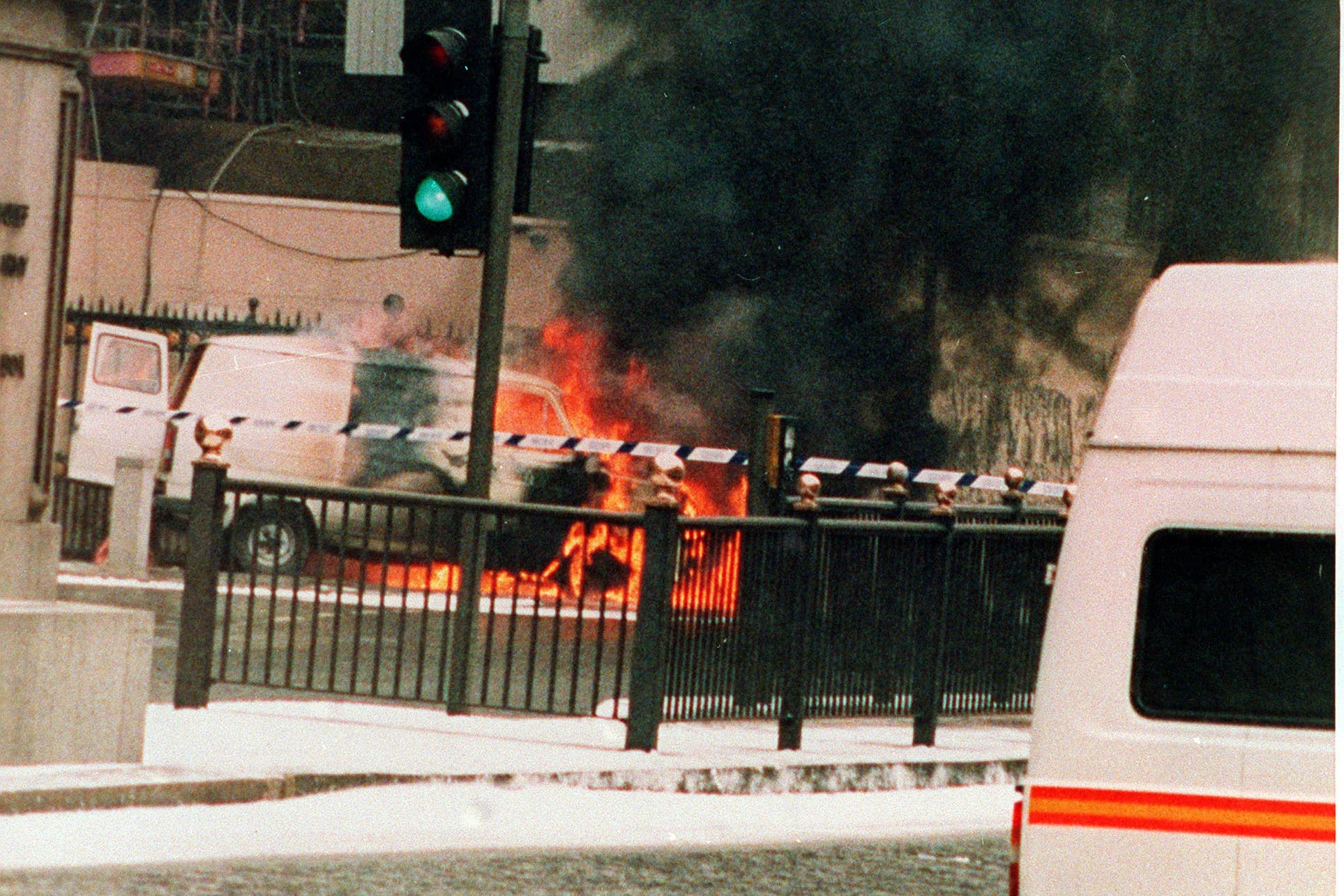Fresh security guidance issued to public figures in 1991 after PIRA attacks
It followed the murder of Conservative MP Ian Gow and a mortar bomb attack on Downing Street.

Fresh guidance on security measures at the homes of public figures was agreed in 1991 after a spate of Provisional IRA (PIRA) attacks in Great Britain.
The year 1990 saw a number of bomb attacks in England, including an attack on the Carlton Club in June, an attack on the London stock exchange and the assassination of Conservative MP Ian Gow in July at his home in East Sussex, as well as a bid to kill air chief marshal Sir Peter Terry at his Staffordshire home in September.
Early 1991 saw a mortar bomb attack on Downing Street in an attempt to kill prime minister Margaret Thatcher and bombs planted at Paddington and Victoria stations, all in February.
A note in a previously secret file dated August 1 1991 detailed a new package of measures to be applied to “all new principals” at threat level J.
It said that in November 1990 the Central Unit was created within the Home Office to provide a central source of protective security and assistance for public figures at threat in Great Britain, excluding royalty.
It was described as having examined critically the current range of technical protective measures in the light of experience of the most likely forms of attack from different groups, naming the PIRA as well as Scottish and Welsh nationalists and animal rights activists.
However it said that specific paper deals only with the “most prevalent and dangerous terrorist threat to public figures in Great Britain, that from PIRA”.
It assessed that improvised explosive devices (IEDs) were the most likely form of attack by the PIRA, adding that from January 1 1988 to March 1 1991, there were nine IED attacks by the group in Great Britain.
It also noted that close quarter shooting attacks were used in Great Britain “more frequently by PIRA in 1990 than ever previously”, counting three attacks and one possible aborted attack.
These included attacks on soldiers in public at Lichfield in June and at Finchley in September, as well as a shooting at the home of Sir Peter in September, and a possibly aborted attack with the “sighting of two armed men” in the grounds of Sir Charles Tidbury’s home in Hampshire in September.
It notes that all attacks at homes in Northern Ireland and Great Britain are mounted from outside the house, and concluded protection should focus on deterrence from approaching the house, protection of vehicles against bombs being planted, protection from blasts, from postal bombs, from shooting at or via the door or through glazing.
More extensive protection, including on-site police protection, was recommended for the homes of “those few public figures assessed to be at high threat”.
Bookmark popover
Removed from bookmarks